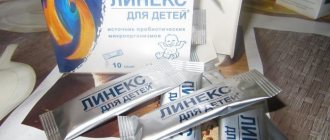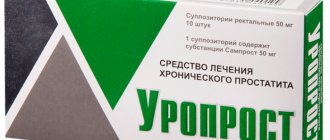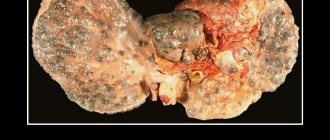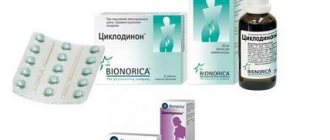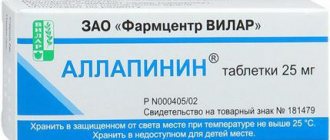Composition and release form
The antibiotic Rocefin is produced in the form of a fine powder from white to yellow. Necessary for preparing a solution for intramuscular or intravenous administration during acute infectious processes. Equipment:
- Solution for intramuscular administration. The powder is packaged in glass ampoules of 0.25, 0.5 or 1 g. The package includes a hermetically sealed Lidocaine ampoule and instructions for use.
- Solution for intravenous administration. The powder is packaged in the same volume in ampoules, water for injection and instructions are included.
- Solution for infusion. The cardboard box contains 1 bottle of powder, 2 g each, instructions for use.
- Solution for intravenous, intramuscular administration. 1 g of powder mass is packaged in glass bottles; instructions must be included.
The finished medicinal solution acquires a yellow tint and is intended for intramuscular or intravenous administration. Features of the chemical composition of the drug:
| Release form | Active ingredient | Excipients |
| solution for intramuscular administration | ceftriaxone disodium salt (0.25 and 0.5 g) | lidocaine solution 1% |
| solution for intramuscular administration | water for injections | |
| infusion solution | ceftriaxone (2 g) | — |
| solution for intramuscular and intravenous administration | ceftriaxone (1 g) | — |
"Ceftriabol"
Antibiotic made in Russia. This medication is an analogue of Rocephin in injections, absolutely identical in the active component. This drug is produced in the form of powders for the preparation of solutions for intravenous and intramuscular infusions.
The indication for the use of the analogue of Rocephin, the antibiotic Ceftriabol, is the treatment of the following infectious and inflammatory problems: infections of the upper and lower zones of the respiratory organs, including pneumonia, lung abscess, pleural empyema; diseases of bones and joints of an infectious nature; pathologies of the skin and soft tissues; diseases of the urinary canal, including pyelonephritis, as well as organs located in the pelvis; inflammatory pathologies of the digestive tract and bile ducts, including gallbladder empyema and cholangitis; bacterial meningitis; peritonitis; bacterial endocarditis; sepsis; salmonellosis; Lyme disease; uncomplicated acute gonorrhea; shigellosis.
In addition, this antibacterial drug is used in postoperative practice for preventive and therapeutic purposes to prevent the possibility of developing infectious complications.
Absolute contraindications to the administration of the Rocephin analogue are high sensitivity to cephalosporins, penicillins and carbapenems, as well as to the auxiliary components of the drug Ceftriabol. Relative contraindications are impaired liver or kidney function, enteritis, and ulcerative colitis. During pregnancy, therapy with this medication is possible only according to indications. The same applies to the lactation period.
The instructions for Rocephin injections and its analogues must be strictly followed.
Pharmacodynamics and pharmacokinetics
The drug Rocephin is an antibiotic from the group of 3rd generation cephalosporins, characterized by a systemic effect in the body. The medication has bactericidal, anti-inflammatory and antibacterial properties. According to the instructions, the active substance disrupts the biosynthesis of cell membranes of pathogenic microorganisms of the gram-negative and gram-positive series. Demonstrates high resistance to β-lactamases. Bactericidal effect of the drug:
- gram-positive bacteria: coagulase-negative staphylococci, Streptococcus agalactia, pyogenes, viridans and pneumoniae; Staphylococcus aureus;
- gram-negative bacteria: Citrobacter diversus, Borrelia burgdorferi, Neisseria gonorrhoeae, Haemophilus influenzae, Aeromona hydrophila, Salmonella, Serratia, Proteus mirabilis, Enterobacter, Alcaligene faecali, Shigella, Providentia, Vibrio, Acinetobacter lwoffi, Klebsiella pneumonia and others;
- anaerobic bacteria: Fusobacterium, Gaffkia anaerobica, Bacteroides, Clostridium, Peptostreptococcus.
When administered intramuscularly, the drug is quickly absorbed from the digestive tract. The maximum concentration in plasma is reached after 3 hours. The bioavailability rate is 100%. Rocephin reacts reversibly with Albumin, penetrates the placenta and is excreted in low concentrations in breast milk. There is no metabolic process. The drug is excreted unchanged within 16 hours by 60% in urine, the rest in bile. The half-life of the drug is 8 hours.
Indications for use
The drug is recommended for use in cases of exacerbation of infectious and inflammatory processes, in the event of a secondary infection after surgery. A complete list of medical indications for Rocephin is presented in the instructions for use:
- urinary tract infections, kidney infections;
- infection of the skin, soft tissues, joints, bones, open wounds;
- meningitis, sepsis, Lyme borreliosis;
- infection of the gastrointestinal tract (hereinafter referred to as GIT);
- peritonitis;
- ENT infections, pneumonia;
- sexual infections.
"Azaran"
This medication is an analogue of Rofecin, absolutely identical in its active ingredient. Production of the drug – Serbia. This drug is produced in the form of powders for the preparation of solutions for intravenous and intramuscular infusions.
The indication for the use of the antibiotic "Azaran" is the treatment of the following infectious and inflammatory diseases:
- infection of the upper and lower structures of the respiratory canals, including pneumonia, lung abscess, pleural empyema;
- diseases of bones and joints of an infectious nature;
- pathologies of the skin and soft tissues;
- diseases of the urinary tract, including pyelonephritis, as well as organs in the pelvis;
- inflammatory pathologies of the digestive tract and bile ducts, including gallbladder empyema and cholangitis;
- bacterial meningitis;
- peritonitis;
- bacterial endocarditis;
- sepsis;
- salmonellosis;
- Lyme disease;
- uncomplicated acute gonorrhea;
- shigellosis.
In addition, this antibacterial drug is used in postoperative practice for preventive and therapeutic purposes to prevent the possibility of developing infectious complications.
Absolute contraindications to the administration of the drug are high sensitivity to cephalosporins, penicillins and carbapenems, as well as to the auxiliary components of the drug "Azaran". Relative contraindications are impaired liver or kidney function, enteritis, and ulcerative colitis. During pregnancy, therapy with this medication is possible only according to indications. The same applies to the lactation period.
Directions for use and dosage
Detailed instructions for the use of Rocephin indicate that this medication is recommended for patients over 12 years old, 1-2 g once a day. The maximum dose of the drug is 4 g. The duration of treatment depends on the degree of the pathological process. After the onset of positive dynamics, treatment should be continued for another 3-4 days. The instructions indicate the dosages of Rocephin for different diagnoses:
- gonorrhea: 250 mg once;
- Lyme borreliosis: 50 mg per 1 kg of weight, but not more than 2 g, 1 time per day for 2 weeks;
- prevention of postoperative complications: 1-2 g once 1 hour before surgery;
- meningitis: 100 mg per 1 kg of weight for patients under 12 years of age, the maximum allowable dose is 4 g.
special instructions
If the body is hypersensitive to penicillin, it is important to remember the risk of a cross-allergic reaction. Instructions for use of Rocephin contain other valuable recommendations for patients:
- In the complex treatment of sepsis or meningitis, doctors do not exclude the addition of a superinfection.
- In case of complicated stage renal and liver failure, the daily dose of the drug, according to the instructions for use, should be reduced to 2 g.
- With long-term antibiotic therapy, it is necessary to monitor immunity and blood clotting parameters.
- With simultaneous hemodialysis, the rate of drug elimination is pathologically reduced.
- During pregnancy and lactation, treatment with Rocephin is permitted under medical supervision. According to the results of clinical studies, embryotoxic, teratogenic, fetotoxic effects on the fetus were not recorded.
- Rocephin inhibits the functions of the nervous system, so during treatment it is necessary to temporarily stop driving and engaging in intellectual activities.
- It is better to use the medicinal solution immediately after preparation, otherwise the therapeutic effect after 6 hours of storage weakens and disappears completely.
- The medicinal composition in which lidocaine is the solvent is prohibited for intravenous administration.
- When administering this drug intravenously, the procedure should be continued for 3-4 minutes.
- The intravenous infusion lasts about 30 minutes. Calcium-free solutions are used for preparation. For example, choose glucose 5%, sodium chloride 0.45% and glucose 2.5%, sodium chloride 0.9%, fructose 5%, glucose 10%, water.
Contraindications
The use of Rocephin is contraindicated in the presence of hypersensitivity to cephalosporins.
The drug is prescribed with caution in the presence of the following diseases/conditions (relative contraindications):
- hyperbilirubinemia in newborns (especially premature ones);
- breastfeeding period;
- hypersensitivity to penicillins.
The safety profile of using Rocephin solution during pregnancy has not been studied. For pregnant women, especially during the first trimester, the drug is prescribed only if there are strict indications.
Rocephin for children
This medication is not prohibited in childhood; the main thing is to choose the correct daily dose for a particular disease. Patients over 12 years of age are prescribed 1-2 g daily, in complicated clinical cases it is increased to 4 g. The daily dose for children under 12 years of age is 20-80 mg per 1 kg of body weight per day. Adult dosages are recommended for small patients weighing over 50 kg. Newborns are prescribed 20-50 mg of the drug per 1 kg of weight. For hyperbilirubinemia, daily doses are adjusted individually.
Rocephin and alcohol
With the simultaneous use of alcoholic beverages with the specified antibiotic, the patient’s well-being does not worsen. There are no severe symptoms of intoxication or disulfiram-like reactions. Doctors do not recommend combining the use of the drug with alcohol, since the load on the liver increases and there is a high likelihood of side effects from the nervous system and gastrointestinal tract.
Content
- 1 Pharmacological action
- 2 Pharmacokinetics
- 3 Indications
- 4 Contraindications 4.1 With caution
- 5.1 Rules for the preparation and administration of solutions
- 6.1 Allergic reactions
Drug interactions
Since Rocephin is involved in a complex treatment regimen, you must study the instructions for use before starting the course. Information about drug interactions:
- Bacteriostatic antibacterial drugs reduce the bactericidal effect of this medication.
- It is prohibited to use Rocephin in combination with Vancomycin, Fluconazole, Amsacrine or aminoglycosides.
- Based on the results of a clinical study in vitro, the antagonism of Chloramphenicol and Ceftriaxone was established.
- Potent diuretics in combination with Rocephin do not cause complications from the urinary system.
Ceftriaxone does not help with pneumonia: reasons, what to do
If Ceftriaxone does not help in the treatment of pneumonia, then you should urgently consult a doctor, as the reasons for this may be:
- insensitivity of the pathogen - it is necessary to culture the sputum and select another antimicrobial agent;
- viral or fungal infection - after examination, specific medications are prescribed;
- several bacteria (mixed infection, often in the elderly) or superinfection (if the immune system is weakened, more microbes are added) - the antibiotic treatment regimen is changed or another antibiotic is added to Ceftriaxone;
- complications have arisen - it is necessary to continue treatment in a hospital;
- An incorrect diagnosis is made - an in-depth examination is required, often in an inpatient setting.
It is also important to know the signs that can be considered a lack of effect from Ceftriaxone:
- there are no changes in the general condition - the temperature persists, weakness, shortness of breath, cough persist, sputum with pus is released;
- in blood tests, ESR and leukocytes were increased, a shift in the leukocyte formula to the left to stab cells was detected;
- On the control radiograph, the focus of inflammation did not decrease.
Side effects and overdose
The drug Rocephin is well tolerated, but in some clinical cases the occurrence of side effects cannot be ruled out. Instructions for use contain a complete list of potential patient complaints:
- fever, impaired sweating, increased body temperature, chills;
- anaphylactic shock, allergic reactions, Quincke's edema;
- flushing, vaginitis;
- agranulocytosis, granulocytopenia, eosinophilia, anemia, leukopenia, hemolytic anemia;
- allergic rhinitis, bronchospasm;
- thrombocytosis, deterioration of blood clotting parameters, thrombocytopenia, nosebleeds;
- pseudomembranous colitis, nausea, diarrhea, vomiting, jaundice, stomatitis, pancreatitis, glossitis, taste disturbance, increased concentrations of liver enzymes and alkaline phosphatase;
- dizziness, convulsions, migraine attacks;
- oliguria, hematuria, development of urolithiasis, increased creatinine;
- dermatitis, urticaria, swelling of the epidermis, skin itching and burning;
- mycoses of the genital organs;
- rapid heartbeat, impaired breathing;
- phlebitis, thrombosis.
If daily doses of Rocephin are systematically exceeded, the patient's body experiences increased side effects. According to the instructions, a specific antidote is not provided. Treatment is symptomatic and carried out only on the recommendation of a specialist.
Analogues of Rocephin
If this medication causes an increase in body temperature or other side effects, it must be changed immediately. Reliable analogues of Rocephin and their brief characteristics:
- Lendatsin. This is an analogue from Slovenia, which also has pronounced antimicrobial activity.
- Loraxone. The manufacturer of this medicine is Iran. The release form of the antibiotic is injections for parenteral administration.
- Medakson. A bactericidal drug from Cyprus, which has a high cost, is effective against infectious processes of various origins.
- Thorocef. A reliable antibacterial drug for intramuscular and intravenous administration. Daily doses depend on the disease and are described in the instructions.
Rocephin or Ceftriaxone - which is better?
In the chemical composition of both medications, the active component is ceftriaxone, which is characterized by a systemic effect in the body. The release forms are also the same. The differences lie in the manufacturer and price of the antibiotic. Rocephin is the original drug of a Swiss pharmaceutical company, while Ceftriaxone is a cheap generic that has more medical contraindications and side effects.
"Cefaxon"
This is a third-generation broad-spectrum cephalosporin antibiotic that has a bactericidal effect by inhibiting the synthesis of the cell wall of pathogenic bacteria. An absolute analogue of Rocephin, produced in India. The drug acetylates membrane-bound transpeptidases, disrupting the cross-linking of peptidoglycans, which is necessary to ensure the rigidity and strength of the cell wall. The drug exhibits high activity against gram-negative, gram-positive, anaerobic and aerobic pathogenic bacteria. The active substance is resistant to β-lactamases.
This pharmacological drug is used for infectious inflammatory diseases that are caused by microorganisms sensitive to ceftriaxone - shigellosis, peritonitis, meningitis, sepsis, gallbladder empyema, Salmonella carriage, lung abscess, pneumonia, pleural empyema, pyelonephritis, cholangitis, damage to joints, skin and soft tissues. tissues, reproductive organs, bone infections, infected burns and wounds. In addition, the medication is used in the postoperative period to prevent infections.
The antibiotic Cefaxon is contraindicated if the body is highly sensitive to cephalosporins. It is prescribed with caution for impaired renal and liver function, colitis, enteritis, provoked by taking antibacterial medications, as well as during the neonatal period with hyperbilirubinemia. The use of the drug while drinking alcoholic beverages is also contraindicated.
The price of this medication ranges from 30 rubles per bottle.
Rocephina price
The cost of this medication is determined by the volume of the package, the concentration of active substances in the chemical composition, and the choice of the capital’s pharmacy. The price of Rocephin powder varies from 500 to 700 rubles.
| Name of capital's pharmacies | Price 1 g of powder for injection, rubles |
| Online pharmacy "Dialogue" | 505 |
| Ozerki | 530 |
| Samson-Pharma | 545 |
| eApteka.ru | 550 |
| Pharmacy chain "36.6" | 550 |
| Pharmacy IFC | 555 |
| Trika | 560 |
| Evalar | 570 |
| ElixirPharm | 570 |
